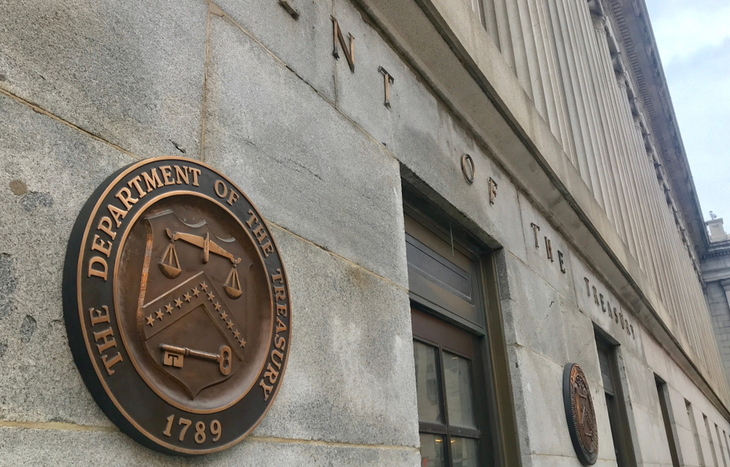What Is a 30-Year Treasury?
Most investors with a forward-thinking mindset plan to hold their investments for decades… yet they balk at the idea of a 30-year commitment like U.S. Treasurys. What is a 30-year Treasury, and why does it cause investors to hesitate? Well, aside from the decades-long commitment they demand, there are some nuances that make them a tricky investment to work with.
Here’s a look at 30-year Treasurys, how they work and the role they play in long-term investing. Be warned: They’re not for everyone. Those who do decide to invest in 30-year bonds need to understand the risks and rewards that come with them.

What You Need to Know About 30-Year Treasurys
Like 10-year T-notes, 30-year Treasurys are a general representation of economic sentiment. While 30-year Treasurys aren’t weighted as heavily as 10-years, they’re an important metric for tracking several products. For example, 30-year mortgage rates tend to ebb and flow with 30-year Treasury rates, differing only by a small margin.
The main appeal of 30-year Treasurys is their low-risk, low-reward combination. They’re widely considered the safest security because they’re backed by the government. And while they have a low rate of return, they generate six-month interest payments that make them a candidate for passive income portfolios. They’re also preferred by investors nearing retirement because of their stability and passivity.
A Barometer for Economic Sentiment
The 30-year Treasury is a widely tracked debt security around the world because it represents the United States’ ability to pay its long-term obligations. As a result, it’s also one of the safest securities.
Domestically, 30-year Treasurys are a great barometer for economic sentiment. If you’ve heard talk in the financial news of “yield curve” or “inverted yield curve,” this is what analysts are talking about.
- When the economic outlook is good, demand for 30-year Treasurys drops. This causes the yield to rise, in an attempt to sway long-term investors back to Treasurys. The more investors favor short-term bonds, the steeper the yield curve on long-term Treasurys becomes.
- When the economic outlook is poor, demand for 30-year Treasurys rises. This causes the yield to fall as bond issuers attempt to push funds back into equities. The more investors favor long-term bonds, the shallower the yield curve becomes. When it’s driven so low that short-term bond yields exceed long-term yields, it’s an “inverted yield curve.”
Because so many other interest-backed securities track Treasurys, yield plays an important role in demand. This is why the financial media is often focused on the yield curve. Everything from mortgage rates to credit card interest can change based on the current rate of Treasurys.
The Benefits of 30-Year Treasurys
It’s important to realize that 30-year Treasurys aren’t something most people will invest in directly. Most times, you’ll invest in these products through a fund or a secondary bond market. Nevertheless, exposure to Treasurys brings stability to your portfolio. In the case of 30-year Treasurys, that could mean locking in a strong rate of return on a long-term bond.
Your reward for locking in your investment is a higher interest rate than other Treasurys – including the coveted 10-year Treasury bond. Since 2000, 30-year bonds have hovered between 3% and 5% returns, although they dipped to new all-time lows in 2020 and 2021. Don’t forget: This means six-month interest payments that can generate strong passive income. For retirees and those nearing retirement, this is an ideal hedge against impending volatility.
And, of course, the biggest benefit of 30-year Treasurys (or any Treasury) is that its ROI is all but guaranteed. If the United States government defaults on your bond, you’ve got bigger problems.
The Drawbacks of 30-Year Treasurys
Let’s address the most obvious qualm first: the 30-year investment period. Even if you buy these bonds when you’re 25 years old, you won’t be able to redeem them until you’re 55! That’s a long time to wait for your money. Unlike equities, it’s hard to recoup your principal without selling it at a loss to someone else willing to wait out the maturity date.
Yield is another problem. Even 30-year Treasurys – which have a respectable interest rate for bonds – pale in comparison to equities. Vesting too heavily in Treasurys could mean losing tens (or hundreds) of thousands of dollars, as equities routinely return double what bonds offer. Even passive income from interest payments doesn’t match up to some companies’ dividend yields!
For retail investors, 30-year Treasurys aren’t all that practical of an investment. Instead, institutional investors tend to hedge their portfolios more with Treasurys. That said, there are ETFs and other funds that track Treasurys – specifically, 30-year bonds.
Should You Invest in 30-Year Treasurys?
If you’re not planning on retiring for 30 years or more, what is a 30-year Treasury worth to you? For the next three decades, you’ll enjoy biannual interest payments from one of the world’s safest and most stable securities. The problem is, you’ll earn far less than you would in equity securities. The question then becomes: How much of your portfolio should you invest in Treasurys? The answer will depend on your age.
To learn more, sign up for the Investment U e-letter below. You can take the next steps in your investment journey by staying up to date with the latest news, trends and strategies.
If you’re young and have a long time horizon, these aren’t the investment vehicles for you. If you’re getting nearer to retirement, debt securities are well worth the investment. Get ready to enjoy a fixed, stable income that’s backed by none other than the United States government itself.
[adzerk-get-ad zone="245143" size="4"]




